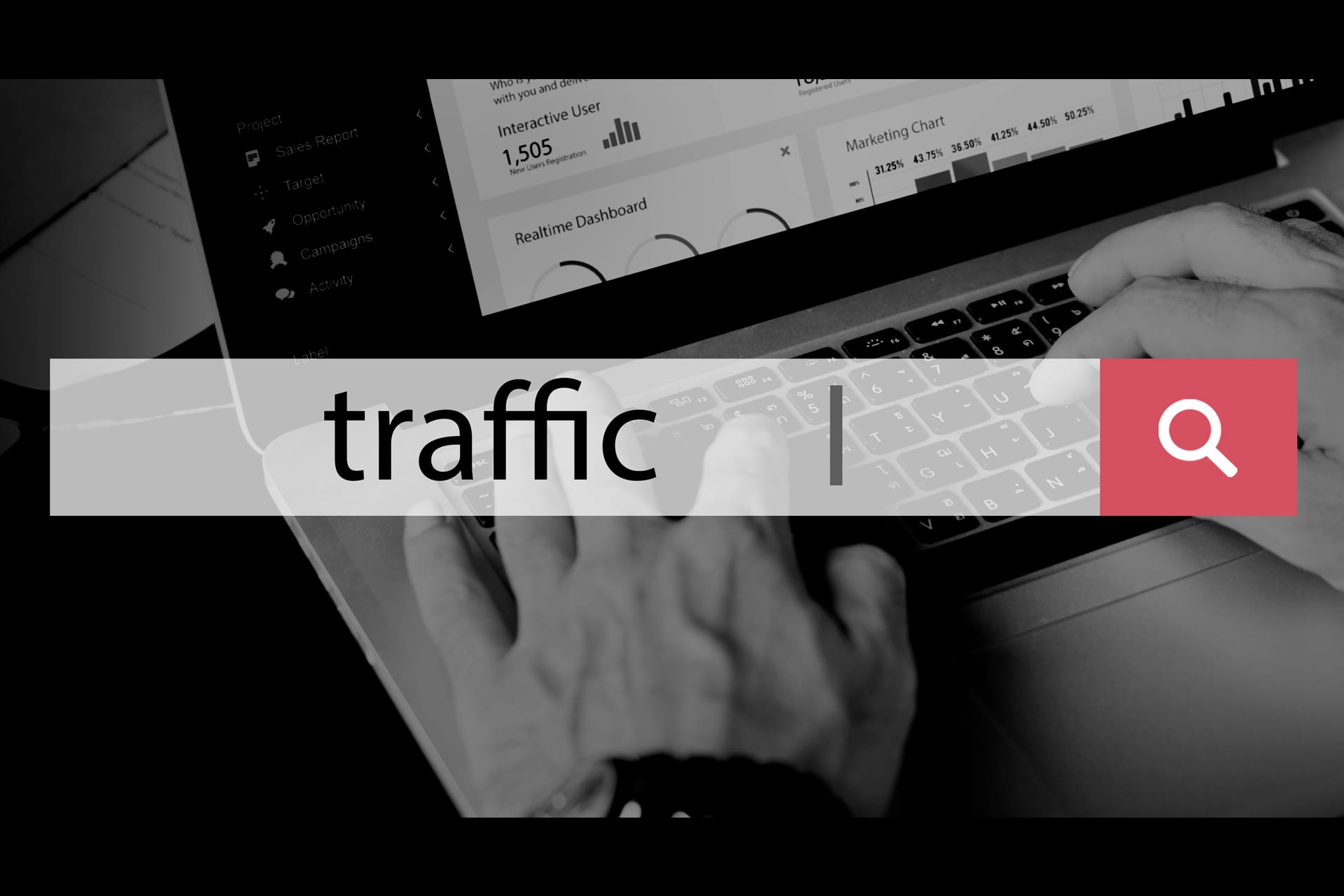You’ve probably considered LinkedIn for your small business in the past.
Maybe you’ve tried, and maybe you haven’t.
There are a ton of things that make it confusing, like whether to use a business or personal page or what kind of content to produce.
So, you likely floated back to your Facebook or Instagram comfort zone.
Social media is in a constant shift, with some sites growing in success and others shrinking.
By now, you’ve probably noticed that you’re not getting the same results you used to from your favorite networks.
As networks change, they need to change the way they present content to their audiences.
Often, that means businesses suffer.
Most social media users – and people in general – aren’t interested in being advertised to, and social networks try to adapt so they can make money without losing users.
In a few years, networks will shift again.
But right now, the best option for your small business is shifting to LinkedIn.
And there are some very compelling reasons you need to make the shift.
Contents
You’ve Likely Tried LinkedIn For Your Small Business
Chances are that following this recommendation won’t be your first try using LinkedIn for your small business.
After all, the site has been around since 2003, so it’s no rookie network.
Yet it never really had the influx of users that sites like MySpace, Facebook, Twitter, and Instagram have.
It’s also never had the growth in content.
Those truths are likely why you saw limited success before.
As a site where people collected professional connections like they were achievement badges and showed them off to potential employers, LinkedIn hasn’t seemed like the place to grow in the past.
Primarily, it lacked the kind of engagement that’s made the other networks successful.
But it’s persisted longer than any other site we use today.
People are beginning to see that resilience.
They’re also beginning to see the value.
Social media experts like Gary Vaynerchuk have been talking about investing more time in it for almost a year.
2019 is LinkedIn's year – I really believe it. Here's an article I wrote with some marketing strategies you can use to…
Posted by Gary Vaynerchuk on Wednesday, March 6, 2019
And there is no question that the company itself realizes it’s on the cusp based on the features they’ve been developing.
Now, more than ever is the time to start focusing more on using LinkedIn for your small business.
Make The Shift To LinkedIn For Your Small Business With This Advice
If you understand what’s happening here, you know it’s time to use LinkedIn for your small business.
It’s evident the site is in the same place Facebook was right before it gained its explosive momentum.
That means it’s time for you to begin making the shift.
But to do that effectively, you’ll need to know what’s working now and how to root your business for LinkedIn’s future growth.
I’d bet you haven’t thought about LinkedIn and the ways to use it much since your last foray.
You’ve likely got no idea what’s changed there and how to take advantage of it.
Let me assure you that a lot has changed.
This feature-rich platform has become a fantastic content hub, and you need to put it to use for your brand.
I’ve put together some advice for you to get the most possible from LinkedIn for your small business.
Get Your Employees To Connect
One of the first steps to successfully using LinkedIn for your small business is growing your audience.
Without anyone to see your content, your content will be unsuccessful.
Of course, that’s a basic truth on all forms of social media, so you shouldn’t be surprised.
However, growing your audience on LinkedIn might happen a little differently, especially when you’re focused on a business page instead of a personal profile.
Understand that you need to grow both to be successful.
Your personal profile will naturally grow as you produce content.
As LinkedIn users seek out people in your industry, they’ll find your content and attempt to connect.
It’s a natural part of the process.
But your business page will need much more help.
When you connect with people, LinkedIn invites them to connect with your company as well.
You could massively grow your connections, but you can only do so much yourself.
Getting your employees to connect with your company page, however, could make that growth exponential.
LinkedIn released statistics about the effect of employee advocacy on company page growth, and it turns out that your employees have ten-times more first-degree connections than your company has followers.
On average, anyway.
Think about that many more connection opportunities for your brand.
The power of LinkedIn for your small business suddenly amplifies, doesn’t it?
Those connections, according to the same stats, build trust for your brand, as 62% of people trust your social media over your advertising.
Again, on average.
Reach and trust form the foundation for success in content marketing.
Focus On Providing Value In Your Content
Content isn’t any different on LinkedIn than it is anywhere else in that it needs to be founded on value.
It should come as no surprise that people don’t like being sold to on LinkedIn any more than they do anywhere else.
The biggest difference when using LinkedIn for your small business is where the value comes from in your content.
As should be understood, people using LinkedIn tend to be in a business mindset on the site.
There isn’t a whole lot of content that revolves around what people are doing “off-the-clock”.
When you produce content for LinkedIn, you need to think about the ways you should be adjusting for that fact.
Frequency Matters
Start by considering the best frequency for you and your brand.
LinkedIn themselves recommends that brands produce content at least weekly, stating that brands who do see double the engagement.
However, others recommend a more daily approach to success.
Regardless, you need to make sense of what you can handle.
You’ll first determine how frequently you can share content on a social media platform.
For many, that can be several times a day without an issue.
But most of the time content is shared without context, and that won’t create success using LinkedIn for your small business.
Instead, you’ll need to share each piece of content with relevant thoughts about why you share it.
In turn, you’ll garner much more engagement than sharing sans-context.
Come From A Business Perspective
Next, you’ll need to think about the ways you can educate your audience about your industry from a business-related perspective.
Some content works better for a consumer-facing social network.
Sharing memes and funny articles can gain a lot of traction on the big three social platforms.
Of course, people there also want to hear your musings about the minute details of your life.
There is a level of connectedness on Facebook, Instagram, Twitter, and most other consumer-facing social networks that makes this kind of content work.
But LinkedIn is a business-based network, and much of the audience you’ll bring in will be interested in your brand’s professional connection, whether it be a partnership, B2B sales, or employment.
Your content needs to hold value from those angles.
Consider the ways you can spin what you’d normally create for your brand on Facebook to something that a user in a work mindset might relate to.
Does your product or service make their work-life easier?
Is your brand one their company might benefit from?
Can knowledge of your industry practices engage the audience you’re looking to build?
Questions like these can help guide your content in the right direction and allow you to generate interest.
And understanding how your content can fit in the context of business will generate an audience.
Leverage Your Team’s Knowledge
The third point of value should come from your team.
However, unlike other content platforms, you won’t be producing this content through your business page.
Your leadership team and any other members who may have something valuable to contribute should be producing LinkedIn Articles.
This may not seem like a way to use LinkedIn for your small business, but it is.
As you and your team create content, you’ll earn visibility.
That visibility will lead to further connections.
I’ve already mentioned that every connection you and your team create is another connection opportunity for your business.
Because LinkedIn articles are written by your team, they make an effective showcase of the talents your clients can work with.
And the opportunities for connections that they create are increased tremendously.
Get Involved In The Conversations Around Other Content
A lot of the advice to use LinkedIn for your small business should sound familiar.
It’s not that different from any other arena of content marketing.
What people may not realize is the impact these tactics have for you on LinkedIn.
Remember that the modern value of LinkedIn comes in showcasing industry expertise.
Along with the content you produce, your resumé, recommendations, professional skills, and associated groups are all on display.
People who come across your LinkedIn profile and page find those details important.
They want to know if you know your industry.
In an environment like that your ability to add value to the conversation matters so much more.
Commenting on the content of others with added value will help you develop your personal audience and build your page following.
The steps to make this as effective as possible are easy.
Start with the “Today’s news and views” section, or search hashtags.

Find what’s relevant now related to your industry, or whatever you’re interested in, for that matter.
Select a few conversations that you can add value to, then comment on them with something relevant and useful for the audience.
Don’t forget that your sincerity counts more than anything.
Address the content you’re commenting on first and let both the original poster and those participating in the comments where you found value.
Contributing has to come from honesty if you want it to work for you.
Learn To Convert Successful Content From Other Channels
The content you create on LinkedIn for your small business doesn’t have to be original.
Much like other content platforms, it simply has to speak the language of the platform.
For B2B companies, it should be easy to convert content posted on other social networks to something that would benefit your audience on LinkedIn.
B2C companies, however, might find this slightly more challenging.
However, if you have content that was successful somewhere else, it has a decent shot at success on LinkedIn.
That’s because it can only be successful if people want to know more about the topic in question.
Content that you’ve already seen success with is a safe bet to move elsewhere.
Starting with content that you’ve seen high engagement and/or conversion from, consider the ways you can make it relevant to a business audience.
Is this a blog article?
If so, what context does it need to be shared in a business community?
Was it an image you shared on social media?
How could you convey the same emotions with a slightly different image?
Analyzing what made the content successful and identifying the ways to create the same response on LinkedIn takes practice.
But not any more practice than it does for repurposing content to any other platform.
Don’t Be That Spammy Salesman!
I wanted to end with something unique to using LinkedIn for your small business.
The concept isn’t what’s unique, though.
It’s the way it presents on LinkedIn.
Everyone with a LinkedIn profile in any arena of decision making has received a message from a salesman asking you to check out their product or services.
Nobody likes them.
If you’re a salesperson or entrepreneur who has considered using this tactic or has used this tactic, I want you to stop and consider what you do when you receive these messages.
They’re irritating, aren’t they?
Let your own response to this ineffective tactic guide you to the right decision.
Don’t spam people on LinkedIn with a sales pitch.
Like any other social network, people aren’t using LinkedIn to be sold to.
These people want to build their professional network and, hopefully, improve their results as an employee, business owner, or partner.
Instead of spamming them, focus on producing value and developing relationships.
Leads and sales will form naturally where the fit is right.
Shift To Using LinkedIn For Your Small Business
LinkedIn is a fantastic content outlet for your marketing strategy.
Producing content on LinkedIn for your small business and using it to grow your following can make a huge difference for your brand.
Knowing what to do and what not to do there will help you be more successful.
If you apply these strategies and make LinkedIn the center of your focus, you’ll begin to see more results from the platform.
Hell, you’ll begin to see more results for your company.
LinkedIn has evolved, and it’s time to see it’s benefits for your small business.





